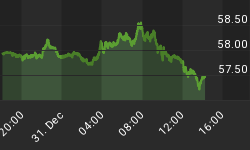In 2009, the S&P 500 index has witnessed two firm corrections off the top. The first was the decline from the January highs into the March low - with the second being the correction into the July bottom. Ready for number three?
The major market averages are now due for what should be the largest percentage correction seen since coming off the March lows - with several key mid-term cycles looking for bottoms around mid-to-late November of this year.
The SPX has recently approached key resistance in the low-1100's, which encompasses various figures - up to and including the 50% retracement of the move down from the October, 2007 peak to the March, 2009 bottom; this figure comes in at or near 1121 on the S&P.
Back in July of this year the decline that was seen into the 07/08/09 bottom came as the result of a low with the 90-day cycle - which is the current market expression of the nominal 18-20 week component. At the time, the analysis called for that correction to be followed by new rally highs for the larger swing - based upon the fact that this 90-day cycle was very bullishly translated to the right. Statistically - when a cycle is able to see such bullish translation - it has approximately 70% odds-or-better of being followed by higher highs again on it's next upward phase.
In terms of time, the rally off the July bottom with the 90-day cycle was not favored to peak prior to late-September or early-October. The statistical analysis of time had shown that when this 90-day component had registered the pattern of a 'higher-low' in the past, then the average rally into the next cycle top lasted in the range of 55 trading days before peaking - which targeted higher highs into this late-September or early-October timeframe.
However, on the back end, the greater-majority of these 90-day upward phases (approximately 80%) - when seeing the pattern of a 'higher-high' - had also seen their tops made on or before the 75 trading day mark. Seventy-five trading days from the July low equated to approximately 10/21/09. So far, the highest high seen has been the 1101.36 peak, made precisely on 10/21/09. While that won't rule out higher highs for the swing, it does suggest that any new high in price - if seen - would be running on borrowed time, and would put the SPX in 'statistical overbought' range with this larger up-cycle phase.
The chart below shows the SPX, along with the approximate position of the 90-day component - which is next due to bottom out in the mid-to-late November timeframe:

Of note is the inverted 'head & shoulder' pattern, which was confirmed in late-July with the push above neckline resistance at the 960 level - of which the same is now strong support for this index going forward (plus or minus). The SPX could make some attempt at this neckline area in the next 2-6 weeks, with the above-noted position of the 90-day cycle.
In addition to the above, from my market observations in regards to cycles I have found a definite tendency of a cycle to revert back to a moving average of the same length - with the 90-day moving average currently at the 1001 level (and rising).
Having said that, one additional observation should be made - and that is the upcoming bottom with the 90-day cycle should also be end up as a low for a larger 180-day (nominal 9-month) wave. The last bottom for this larger cycle was the March, 2009 low of 666.79 for the SPX - and is next due for a low anywhere in the November or December timeframe of this year. We can take a look at this 180-day cycle on the chart below:

If a cycle tends to revert back to a moving average of the same length, then we can say that the SPX has at least the potential for a decline back to it's 180-day moving average; this moving average is well under current price levels, right now around the 921 figure and rising on the SPX. However, this moving average will obviously be at a higher level by the time that November/December roll around.
On the chart below I have extrapolated this key moving average to approximately mid-November of this year; note that it comes in at or near the 950-960 area at that time - which is also at or very near the neckline of the inverse 'head & shoulder' pattern that was mentioned earlier.

With all of the above then said and noted, a correction from the low-1100's on the SPX down to the 950-960 area (plus or minus) would be in the range of 10-12% or better off the top - which is, statistically, in line with a normal percentage correction heading into a combined bottom with the 90 and 180-day cycles (i.e. 10% or greater off the high).
Should the above materialize in the weeks ahead, then we would need to be on the lookout for technical indications of a larger low forming with these two key cycles - which would likely give way to a sharp rally off the same into late-2009 or into early-2010.
















